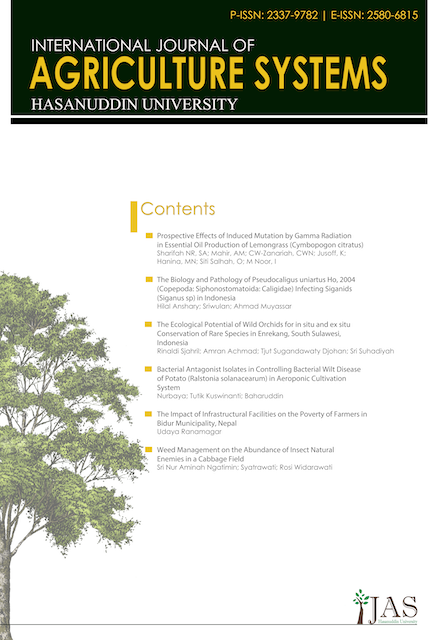Abstract
This study aimed to determine the effect of each component of cultivation technology application on the production of rice (Oryza Sativa L.) in South Sulawesi. This research was carried out in three rain-type sectors within South Sulawesi Province, namely Maros for the West Sector, Bone for the East Sector, and North Luwu for the Transitional sector. A study was conducted from December 2019 to January 2020 in the form of a survey (study literature, observation, and interviews), with the selection of samples carried out purposively to 90 respondents. Data analysis employed multiple linear regression with SPSS software. The results showed that the average rice production in Maros, Bone and North Luwu regencies, South Sulawesi, was still relatively low, Maros Regency was 7,032 kg per ha, Bone was 5,020 kg per ha and North Luwu was 6,497 kg per ha. The multiple regression equation for rice production in Maros, Bone and North Luwu Regencies, South Sulawesi is Y = 3354,185 -17,751X1 – 4,044X2 +36,839X3 . Factors from the aspect of cultivation technology application can increase rice production. Variables of cropping system, irrigation system, and fertilizer dose had a significant effect on rice production, while the variables of varieties and harvest time did not have a significant effect on rice production.

